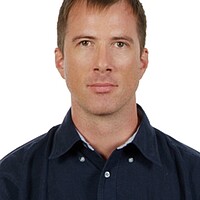Taiwan's nuclear power plants are magnets for protesters – and snorkelers
Loading...
| Kenting, Taiwan
Wang Tzu-kai isn't worried about the domes of a nuclear plant visible over a tiny ridge from his hometown beach. The plant dumps used cooling water into the strait next to a sandy spot where he was lounging on a recent afternoon.
“The plant has been running for so long, yet no problems,” says Mr. Wang.
The anti-nuclear movement in Taiwan, once a fringe movement, is going mainstream. President Ma Ying-jeou's government promised to freeze construction on the island's fourth nuclear power plant this April, after tens of thousands turned out to protest in Taipei. The temporary freeze takes effect this month.
Nearly 59 percent of people polled in April by Taiwan's Commonwealth magazine, a politics and economics publication, said they wanted the fourth nuclear power plant stopped because they fear a disaster akin to Japan's 2011 Fukushima earthquake and reactor meltdown. Like Japan, Taiwan sits in a highly seismic area.
Yet 200,000 people per day pack the South Bay beach, on the southern tip of Taiwan and not far from Kaohsiung, its second largest city. Beach goers see no irony in sunbathing next to one plant while opposing the next one.
Some locals make a distinction between Taiwan's three existing nuclear plants – built in the 1970s and 1980s – and plans for the fourth one. The plant here, No. 3 and reported no major accidents in its 29 years. The fourth plant, which is going up in New Taipei City, a much more populated area, was already behind schedule and over budget when the Fukushima earthquake jolted public opinion over the risks of nuclear power.
"The fourth plant has a weak spot. It’s been stopped, restarted, stopped and restarted again,” says Wang Hsing-fu, a southern Taiwan native who relaxed on the beach in mid-July.
Nuclear supporters hope that, like No. 3, if the fourth nuclear plant is eventually completed, it will be accepted by locals. Over 95 percent of Taiwan's energy is imported and supporters say nuclear power – which accounts for 19.5 percent of the island’s total energy generation – is cleaner and costs less than imported coal and oil.
The three current plants are scheduled to be taken offline by 2025. They would be required to serve longer if the fourth plant is not completed as planned, the economics ministry has said.
Grown attached
South Bay’s popularity persists because Taiwanese grew attached to the beach long before the anti-nuclear movement brought attention to the risk of accidents. Some are now worried about the beach, but can’t bear to change.
“People’s awareness of nuclear safety is progressing,” says Yang Lian-fu, a publisher of Taiwan history books who writes about political and development issues. “Still, South Bay is so scenic. You don’t feel any sense of panic.”
Authorities from the surrounding Kenting National Park say the number of beach visitors has held steady over the years, with no complaints of short-term discomfort or long-term illness. Ocean water tests have turned up no radioactivity.
Government operator Taiwan Power Corp. says the cooling water is clean, though it concedes a role in coral bleaching from the outtake water, which is 88-90 degrees Fahrenheit, 2-4 degrees higher than normal summer temperatures. Bleached coral turns white and is at risk of dying.
In the summer, hundreds wade up to their waists in South Bay’s blue-green water. Even in winter, the water stays warm enough for swimmers.
Some South Bay fans admit they didn’t know about the nuclear plant next door or the unfinished one. Some know but don’t care. “Nuclear power?” asks Yang Chung-ming, a first-year high school student who has visited South Bay 20 times. “I think a little bit is OK. I won’t be afraid.”
Diving guides give tours near the outtake pipe, finding healthy groupers, manta rays, and sea turtles near coral reefs. Anti-nuclear activists view all this with dismay.
“Although you can see the domes, a lot of people aren’t aware it’s a nuclear plant,” says Wang Shun-wei, coordinator of Taiwan’s anti-nuclear protest group Green Citizens’ Action Alliance. “The public hasn’t received enough awareness of the risk.”





